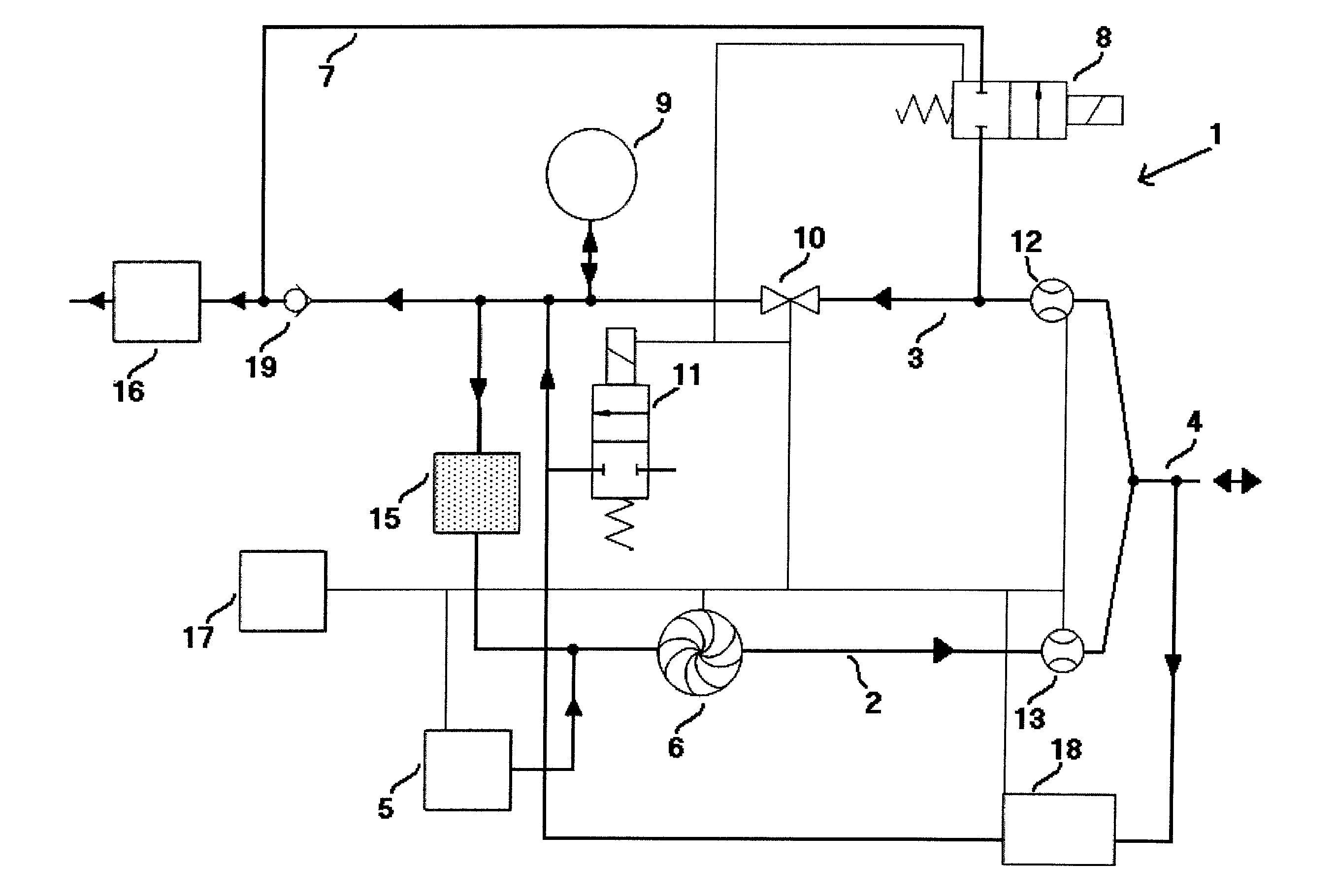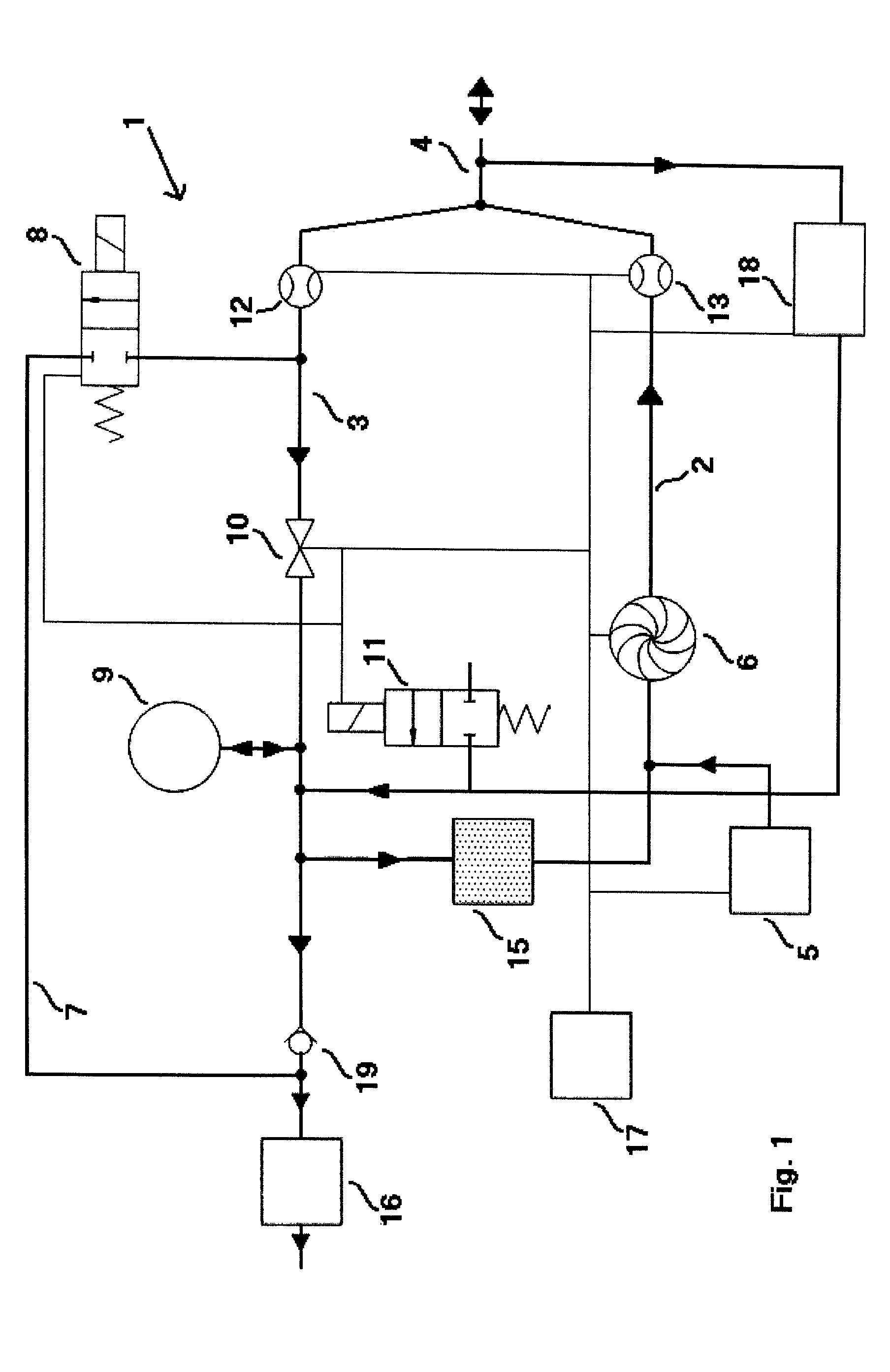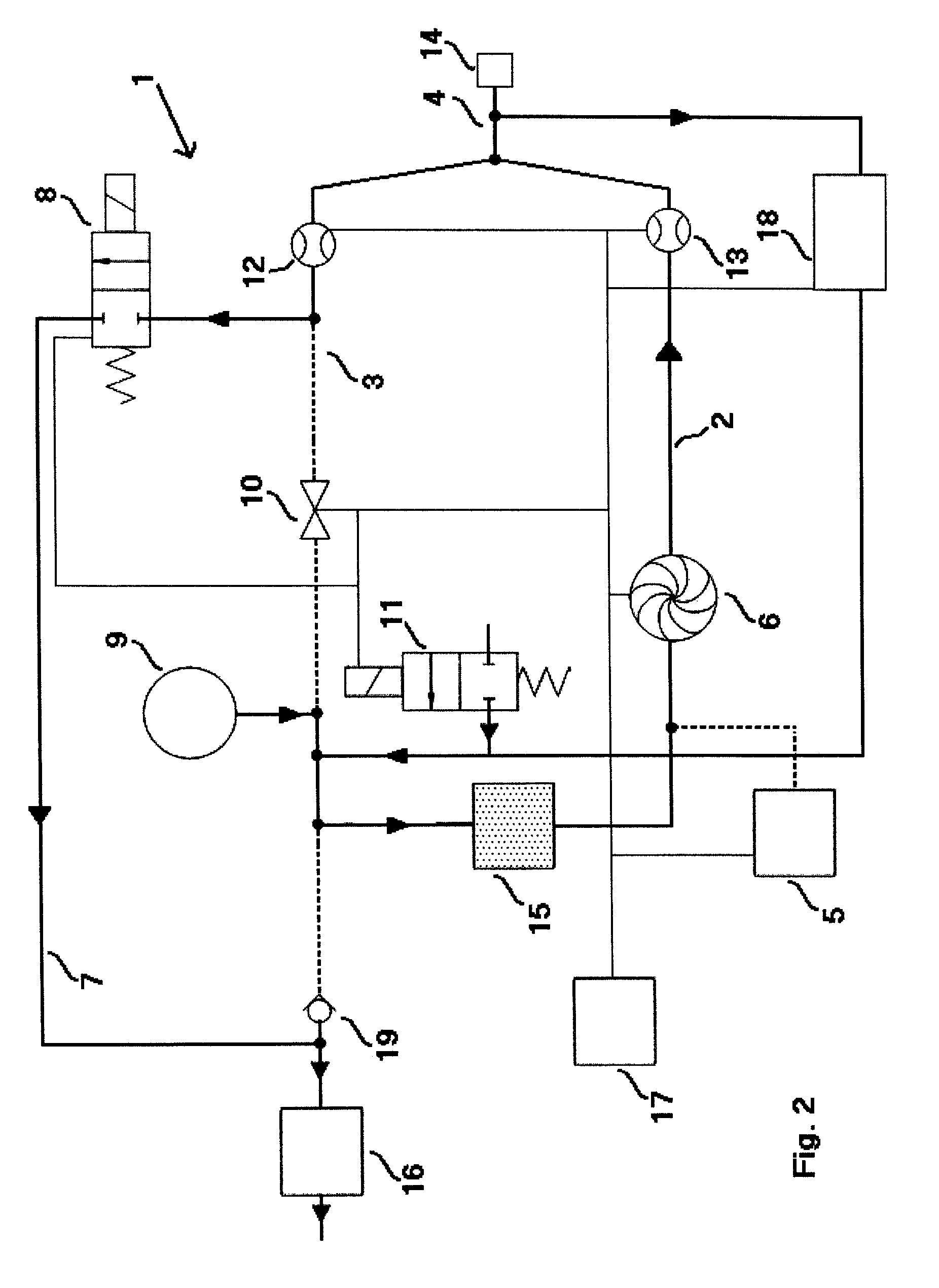Anesthesia device and process for operating an anesthesia device
an anesthesia device and breathing gas technology, applied in the direction of inhalators, respirators, etc., can solve the problems of inconvenient operation, high cost, and inability to use breathing gas for reprocessing breathing circuits, etc., and achieve the effect of simple processing of anesthesia devices
- Summary
- Abstract
- Description
- Claims
- Application Information
AI Technical Summary
Benefits of technology
Problems solved by technology
Method used
Image
Examples
Embodiment Construction
[0026]Referring to the drawings in particular, FIG. 1 shows a schematic view of the anesthesia device according to the present invention with a breathing circuit 1. Breathing circuit 1 is designed in the form of a rebreathing system, in which CO2 is removed from a breathing gas expired by the patient by a CO2 absorber. This breathing gas is subsequently added again to the inspiratory breathing gas. Only the breathing gas consumed by the patient is replaced in such a rebreathing system. The rest is reused from the expiratory breathing gas. The respective breathing gas pathways are indicated by bold lines in FIG. 1, whereas the thin lines represent control and data lines between the individual components of breathing circuit 1.
[0027]Breathing gas is fed to the breathing circuit 1 from a breathing gas supply system 5. The breathing gas is usually processed in the corresponding medical means and comprises essentially an oxygen-air mixture, N2O and volatile gaseous anesthetics. A breathi...
PUM
 Login to View More
Login to View More Abstract
Description
Claims
Application Information
 Login to View More
Login to View More - R&D
- Intellectual Property
- Life Sciences
- Materials
- Tech Scout
- Unparalleled Data Quality
- Higher Quality Content
- 60% Fewer Hallucinations
Browse by: Latest US Patents, China's latest patents, Technical Efficacy Thesaurus, Application Domain, Technology Topic, Popular Technical Reports.
© 2025 PatSnap. All rights reserved.Legal|Privacy policy|Modern Slavery Act Transparency Statement|Sitemap|About US| Contact US: help@patsnap.com



